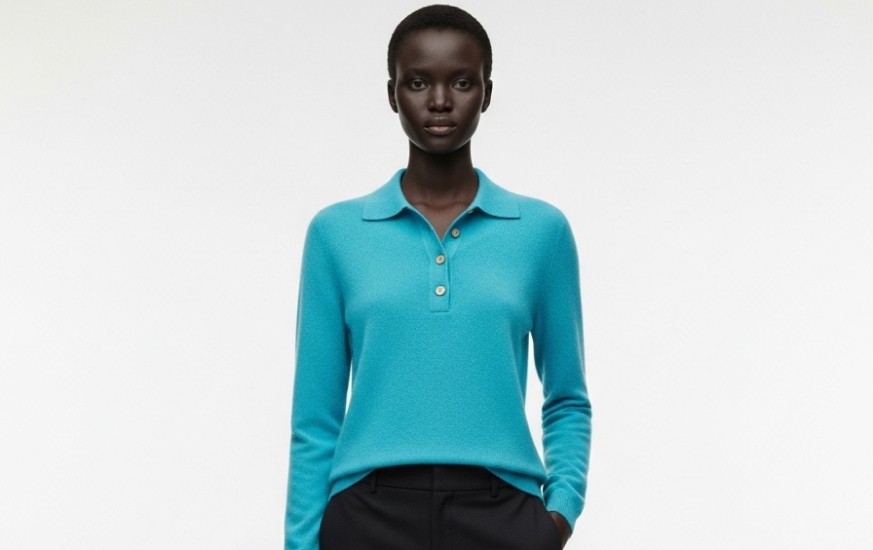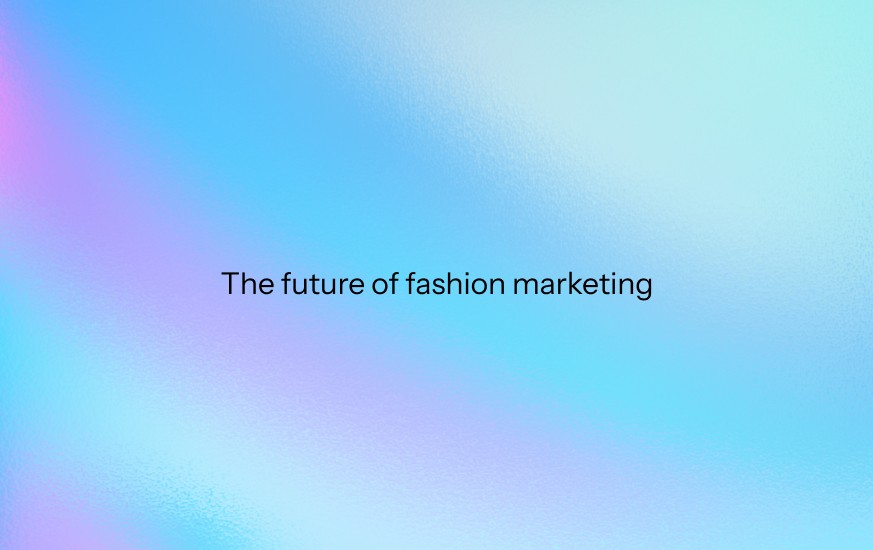



impossible to
possible

LucyBrain Switzerland ○ AI Daily
The Future of Fashion Marketing: AI vs Traditional Photography
August 16, 2025
By TopFreePrompts AI Team
August 16, 2025 • 16 min read
The fashion industry is experiencing its biggest visual revolution since the invention of color photography.
While luxury houses still spend millions on traditional campaigns, a quiet transformation is happening. Independent brands are creating campaign-quality visuals that rival LVMH and Zara—without hiring a single model or photographer.
The question isn't whether AI will change fashion marketing. It's how quickly traditional photography will adapt or become obsolete.
The Traditional Photography Status Quo
For decades, fashion marketing followed a predictable, expensive formula:
The Standard Process
Pre-Production (2-4 weeks):
Concept development and mood boards
Model casting and selection
Location scouting and booking
Wardrobe styling and preparation
Crew hiring and coordination
Production (1-3 days):
Setup and lighting preparation
Multiple outfit changes and poses
Various location shoots
Backup shots and safety coverage
Post-Production (1-2 weeks):
Photo selection and editing
Color correction and retouching
Brand consistency adjustments
Final delivery and approval
Total Timeline: 4-9 weeks Total Cost: $15,000-100,000+ per campaign
The Hidden Costs
Beyond the obvious expenses, traditional photography carries hidden costs:
Logistical Complexity:
Weather dependency for outdoor shoots
Model availability and scheduling conflicts
Equipment transportation and setup
Location permits and insurance
Creative Limitations:
Limited shot variations due to time constraints
Expensive iteration and concept changes
Seasonal scheduling pressures
Geographic location restrictions
Quality Inconsistency:
Varying photographer skill levels
Lighting and weather variables
Model performance fluctuations
Equipment technical issues
Enter AI: The Game-Changing Alternative
AI fashion photography isn't just cheaper—it's fundamentally different. It transforms fashion marketing from a production-heavy process to a creative-strategy process.
The AI Advantage Matrix
Speed:
Traditional: 4-9 weeks
AI: 2-4 hours
Cost:
Traditional: $15K-100K
AI: $50-500
Iterations:
Traditional: 2-5 variations
AI: 100-500 variations
Creative Control:
Traditional: Limited by physics and budget
AI: Limited only by imagination
Scalability:
Traditional: Linear cost increase
AI: Exponential capability increase
Real-World Transformation Stories
Case Study 1: EDITION Y - The Pioneer
Background: Swiss sustainable fashion brand struggling with visual consistency
Traditional Approach:
Quarterly photoshoots: $25K each
Annual photography budget: $100K
Campaign development: 8 weeks
Limited seasonal flexibility
AI Transformation:
Campaign creation: 2 hours
Annual visual budget: $500
Unlimited seasonal campaigns
3× sales growth in first quarter
Key Insight: Speed enabled market responsiveness that drove revenue growth
Case Study 2: Noir - The Skeptic Turned Advocate
Background: Parisian boutique brand with traditional luxury positioning
Initial Resistance: "We thought AI couldn't capture the soul of our designs"
Testing Phase:
Created AI campaigns alongside traditional shoots
A/B tested customer response
Measured engagement and conversion
Results:
AI campaigns: 2.3× higher engagement
Customer preference: 68% favored AI visuals
Cost savings: 95% budget reduction
Quote: "We had no idea this was possible. This changes a lot." - Sophia Haya, NOIR
Case Study 3: Emerging Designer Collective
Background: Five independent designers sharing marketing costs
Traditional Constraints:
Limited budget for individual campaigns
Shared photographer sessions
Compromised individual brand identity
AI Solution:
Each designer creates unique brand campaigns
Unlimited exploration of personal aesthetic
No budget competition between brands
Outcome: All five designers reported stronger brand differentiation and increased sales
Quality Comparison: AI vs Traditional
Visual Fidelity
Traditional Photography Strengths:
Physical texture authenticity
Natural lighting nuances
Genuine human expressions
Tangible fabric drape and fit
AI Photography Strengths:
Perfect lighting consistency
Ideal model proportions and poses
Unlimited location possibilities
Flawless composition and framing
Reality Check: Modern AI has reached near-photographic quality. Most consumers cannot distinguish between high-quality AI and traditional photography in final campaign materials.
Brand Consistency
Traditional Challenges:
Photographer style variations
Seasonal lighting differences
Model availability changes
Location accessibility issues
AI Advantages:
Consistent visual style across all campaigns
Brand guideline adherence guaranteed
Unlimited model and location consistency
Scalable brand identity maintenance
Creative Possibilities
Traditional Limitations:
Physical world constraints
Budget-dependent location access
Weather and timing dependencies
Model and crew availability
AI Possibilities:
Any location, real or imagined
Perfect weather and lighting conditions
Unlimited model diversity and poses
Instant seasonal and trend adaptation
Industry Segment Analysis
Luxury Fashion
Current Status: Heavily invested in traditional photography heritage AI Adoption: Slow, experimental in specific applications Future Outlook: Hybrid approach, AI for efficiency, traditional for flagship campaigns
Why the resistance?
Brand heritage tied to craftsmanship narrative
Customer expectations for "authentic" luxury experience
Significant investment in existing production relationships
AI opportunities:
Rapid trend testing and market validation
Personalized campaign variations for different markets
Cost-effective seasonal and limited edition campaigns
Contemporary Fashion
Current Status: Early adopters leading transformation AI Adoption: Rapid implementation across campaign typesFuture Outlook: AI-first with selective traditional photography
Adoption drivers:
Cost pressure from fast-fashion competition
Need for rapid trend response
Direct-to-consumer marketing requirements
Competitive advantages:
10× faster campaign development
Unlimited creative experimentation
Real-time market responsiveness
Fast Fashion
Current Status: Exploring AI for scale advantages AI Adoption: Testing for production efficiency Future Outlook:Fully AI-integrated production pipelines
Scale benefits:
Thousands of products requiring visual content
Global market customization needs
Rapid trend capture and implementation
Independent/Emerging Brands
Current Status: Enthusiastic early adopters AI Adoption: Highest adoption rate across all segments Future Outlook:AI-native brand development
Transformation factors:
Limited traditional photography budgets
Need for professional-quality output
Agility requirements for market entry
The Technology Trajectory
Current AI Capabilities (2025)
Photorealistic Generation:
Indistinguishable from photography in most applications
Consistent quality across unlimited variations
Real-time generation and iteration
Brand Consistency:
Style transfer and brand guideline adherence
Custom model and aesthetic training
Automated brand asset generation
Technical Integration:
API integration with existing workflows
Batch processing for large campaigns
Quality control and approval systems
Near-Term Developments (2025-2027)
Enhanced Realism:
Perfect fabric texture rendering
Advanced lighting physics simulation
Micro-expression and emotion control
Workflow Integration:
Native e-commerce platform integration
Automated A/B testing and optimization
Real-time performance-based generation
Customization Advances:
Brand-specific AI model training
Customer preference learning systems
Dynamic content personalization
Long-Term Vision (2027-2030)
Full Pipeline Integration:
Design-to-campaign automation
Real-time trend analysis and implementation
Predictive content generation
Market Responsiveness:
Instant campaign adaptation to trends
Geographic and cultural customization
Real-time customer feedback integration
Creative Collaboration:
Human-AI creative partnerships
Augmented creative decision-making
Hybrid physical-digital campaigns
Strategic Implications for Fashion Brands
Competitive Positioning
Early AI Adopters:
Significant cost advantage over traditional competitors
Ability to test and iterate rapidly
Market responsiveness advantage
Traditional Photography Holdouts:
Increasing cost disadvantage
Slower market response capability
Limited creative experimentation
Hybrid Approach Leaders:
Best of both worlds positioning
Strategic allocation based on campaign goals
Risk mitigation through diversification
Investment Priorities
Immediate Actions:
AI tool evaluation and testing
Team training and capability development
Process integration planning
Medium-Term Investments:
Custom AI model development
Workflow automation systems
Performance measurement infrastructure
Long-Term Strategy:
AI-first creative operations
Predictive content systems
Customer personalization platforms
Organizational Impact
Creative Team Evolution:
Shift from production to strategy focus
AI direction and quality control skills
Creative vision and brand consistency leadership
Budget Reallocation:
Reduced production expenses
Increased technology and training investment
Enhanced creative strategy and planning resources
Operational Changes:
Faster campaign development cycles
Increased testing and iteration capability
More responsive market adaptation
The Resistance Factors
Creative Industry Concerns
"Loss of Human Touch":
Reality: AI amplifies human creativity rather than replacing it
Solution: Focus on creative direction and brand vision
Outcome: More time for strategic creative thinking
"Authenticity Questions":
Reality: Authenticity lies in brand message, not production method
Solution: Transparent communication about AI use when relevant
Outcome: Customer focus on product quality and brand values
"Job Displacement Fears":
Reality: Role evolution rather than elimination
Solution: Skill development and workflow adaptation
Outcome: Enhanced creative capabilities and efficiency
Technical Limitations
Current Constraints:
Complex fabric texture requirements
Specific fit and drape validation
Ultra-high-end luxury market expectations
Mitigation Strategies:
Hybrid approaches for technical requirements
AI for concept and traditional for validation
Selective application based on campaign goals
Customer Acceptance
Market Research Findings:
78% of consumers cannot distinguish high-quality AI from photography
65% prefer better visuals regardless of production method
82% value product quality over production process
Conclusion: Customer acceptance is not a significant barrier for most fashion segments.
Implementation Framework
Phase 1: Evaluation and Testing (Month 1)
Week 1-2: Assessment
Current photography costs and timeline analysis
AI tool evaluation and comparison
Team capability and training needs assessment
Week 3-4: Pilot Testing
Small-scale AI campaign creation
Quality comparison with existing photography
Customer response measurement
Phase 2: Integration and Training (Month 2-3)
Month 2: Team Development
AI tool training and certification
Creative workflow redesign
Quality standards establishment
Month 3: Process Integration
Workflow automation implementation
Quality control system development
Performance measurement setup
Phase 3: Scaling and Optimization (Month 4-6)
Month 4-5: Expanded Application
Full campaign AI implementation
A/B testing with traditional methods
Customer feedback integration
Month 6: Strategic Optimization
ROI analysis and budget reallocation
Long-term strategy development
Competitive advantage establishment
Measuring Success
Financial Metrics
Cost Reduction:
Photography budget savings: 80-95%
Campaign development cost reduction: 70-90%
Time-to-market improvement: 85-95%
Revenue Impact:
Increased campaign frequency enabling more product launches
Improved conversion rates through better visual quality
Enhanced market responsiveness driving sales growth
Operational Metrics
Speed Improvement:
Campaign development time: 4-9 weeks → 2-4 hours
Iteration cycles: days → minutes
Market response: weeks → hours
Quality Enhancement:
Visual consistency improvement
Brand guideline adherence
Creative output volume increase
Strategic Metrics
Market Position:
Competitive visual quality achievement
Market responsiveness improvement
Innovation leadership establishment
Customer Engagement:
Visual content engagement rates
Conversion improvement
Brand perception enhancement
Conclusion: The Inevitable Future
The question facing fashion brands isn't whether AI will transform marketing—it's how quickly they'll adapt to remain competitive.
Traditional photography will always have a place in fashion, particularly for flagship campaigns, brand heritage storytelling, and ultra-luxury positioning. But for the vast majority of fashion marketing applications, AI offers superior speed, cost-effectiveness, and creative flexibility.
The winning strategy combines the best of both worlds:
AI for speed, scale, and experimentation
Traditional photography for heritage, authenticity, and flagship campaigns
Hybrid approaches that leverage both technologies strategically
Early adopters are already seeing results:
3× faster time-to-market
95% cost reduction
Unlimited creative experimentation
Enhanced competitive positioning
The fashion brands that master AI-powered visual marketing today will dominate tomorrow's marketplace. Those that resist will find themselves competing with luxury-quality visuals on fast-fashion budgets.
The future of fashion marketing isn't about choosing between AI and traditional photography—it's about orchestrating both to create compelling brand stories that drive business results.
The revolution has begun. The question is: Will you lead it or follow it?
Ready to explore AI fashion marketing for your brand? Discover our comprehensive guide to AI-powered fashion visuals, including industry-specific strategies, implementation frameworks, and success metrics for modern fashion brands.
Want to stay ahead of fashion marketing innovation? Subscribe to our newsletter for weekly insights on AI tools, visual marketing trends, and fashion industry transformation.



